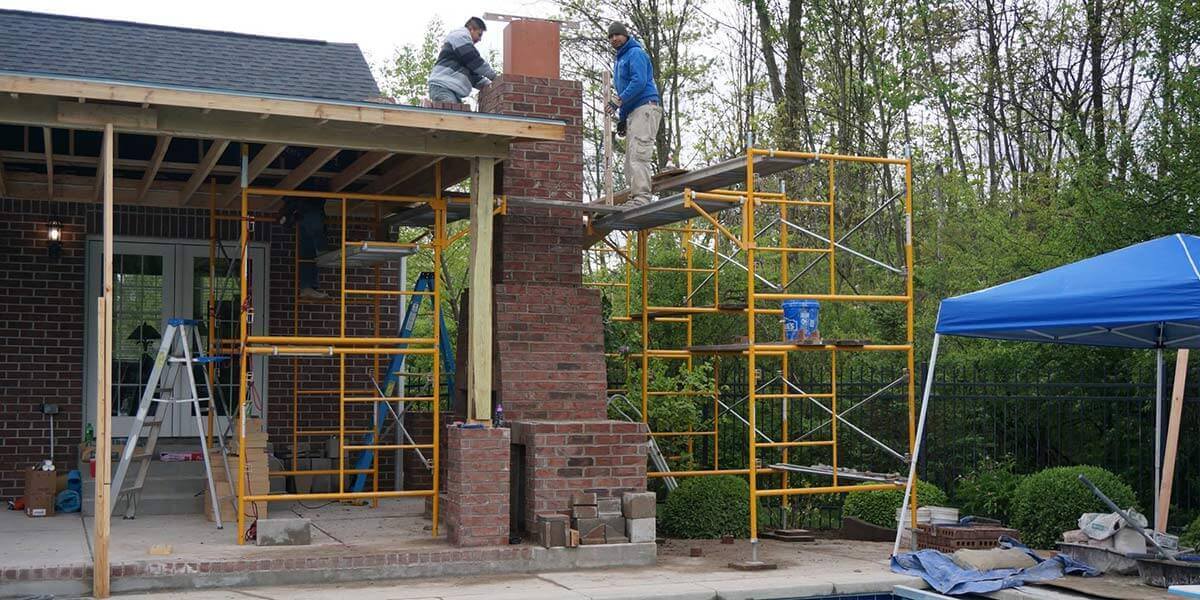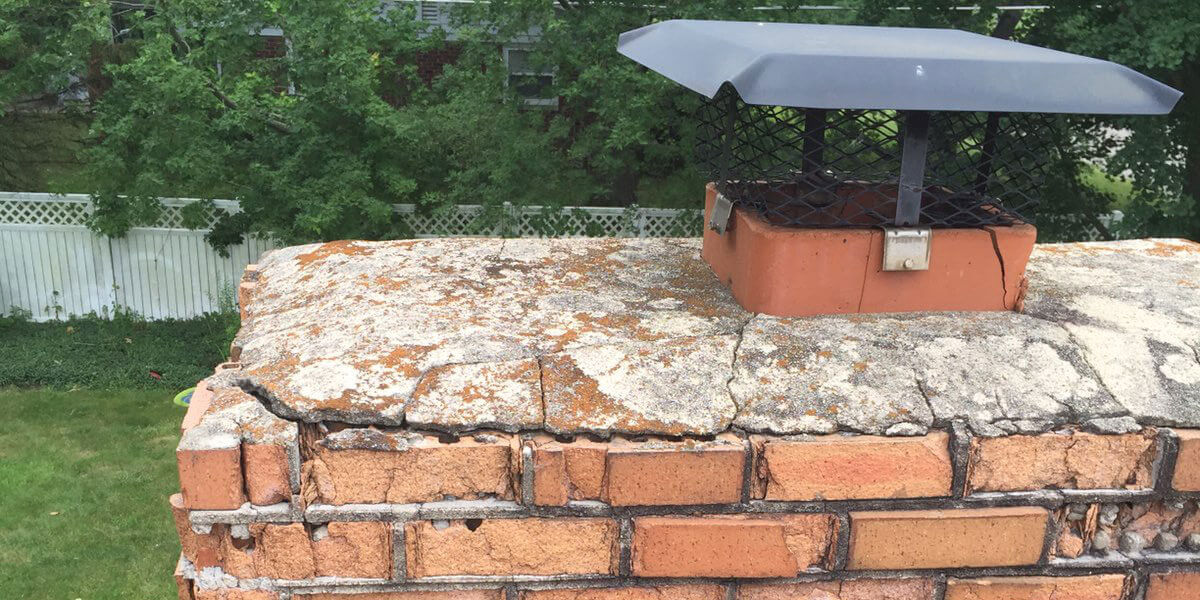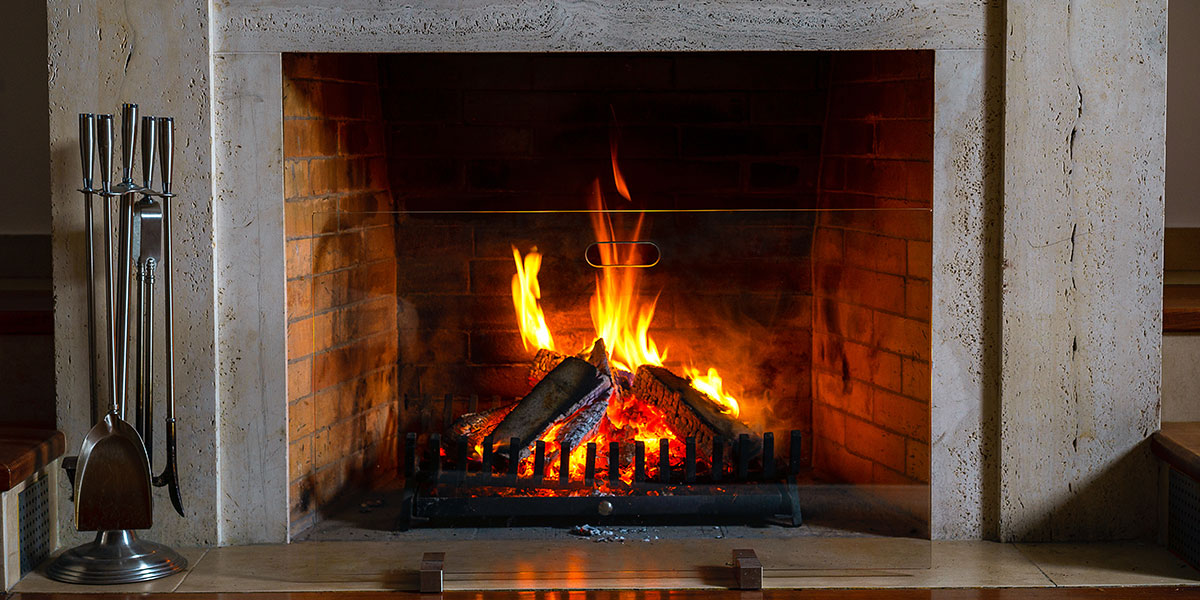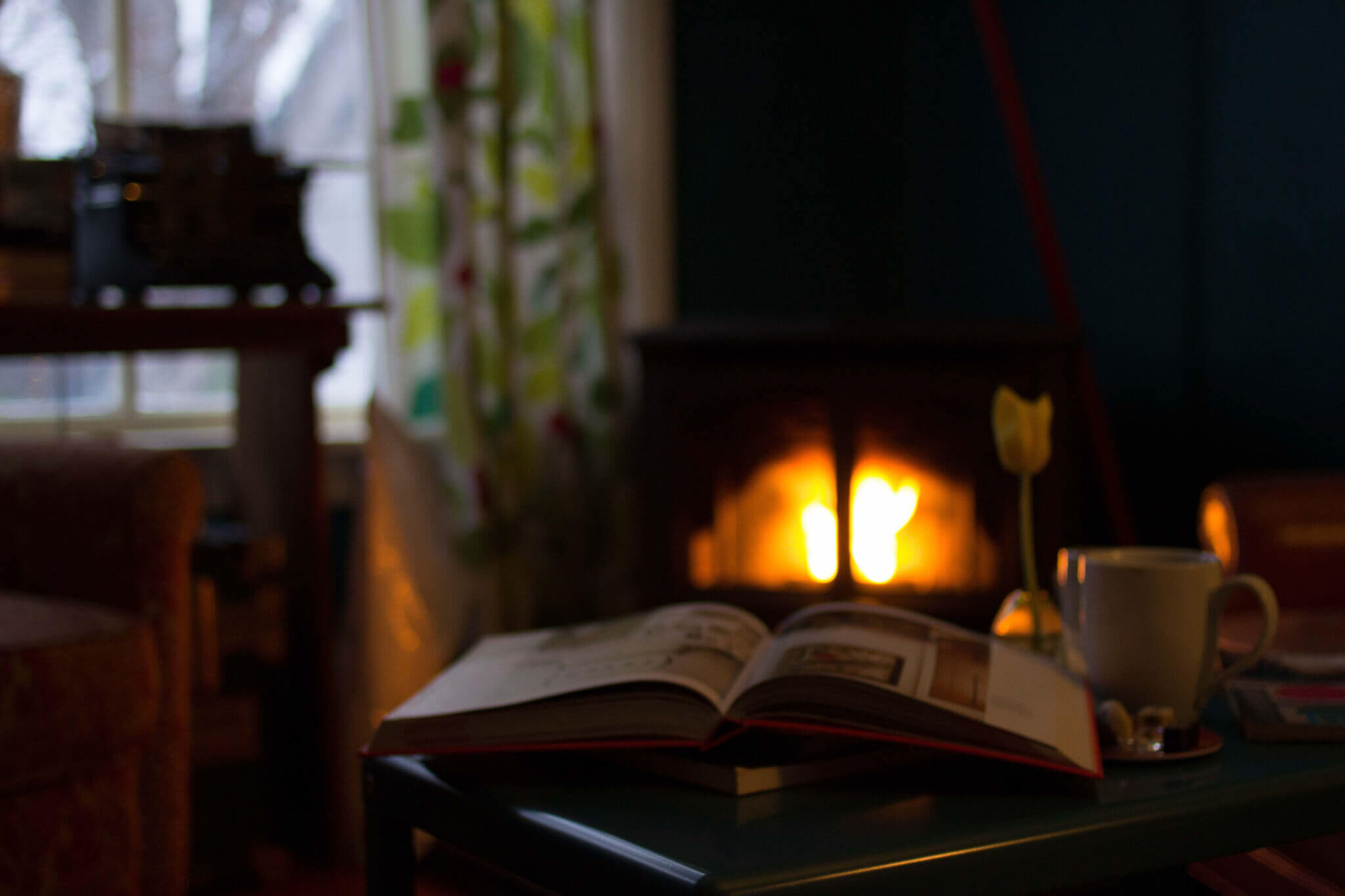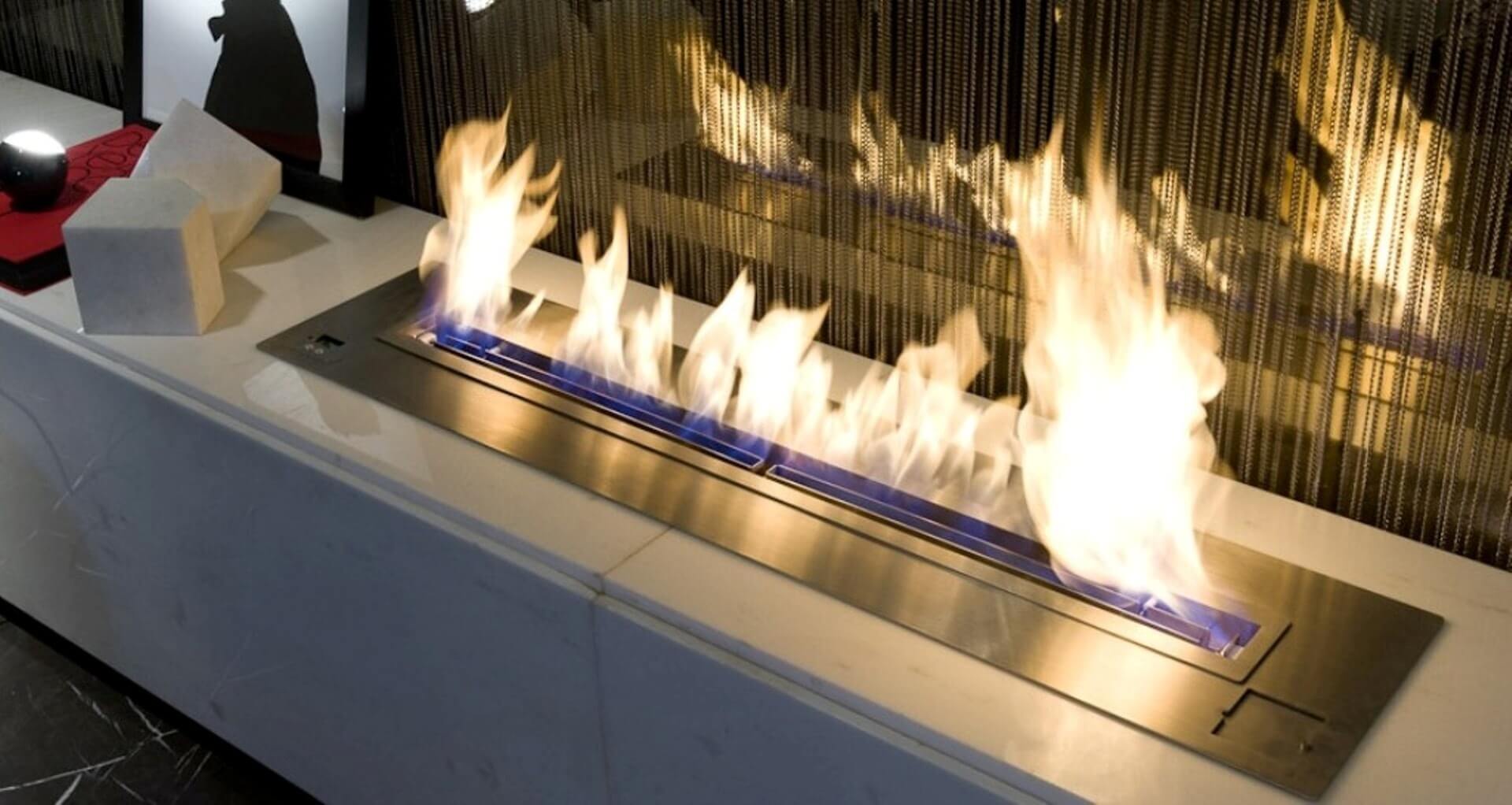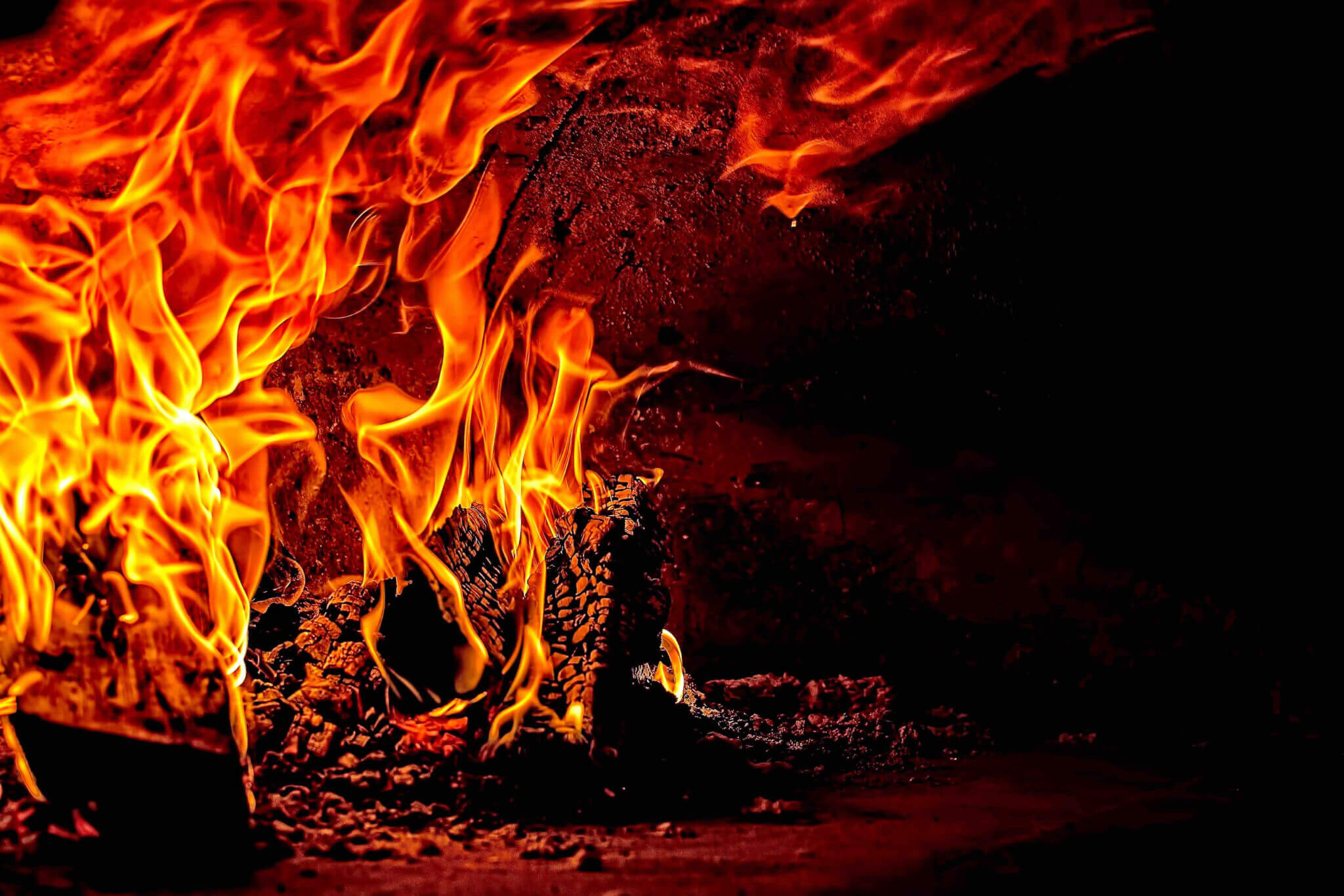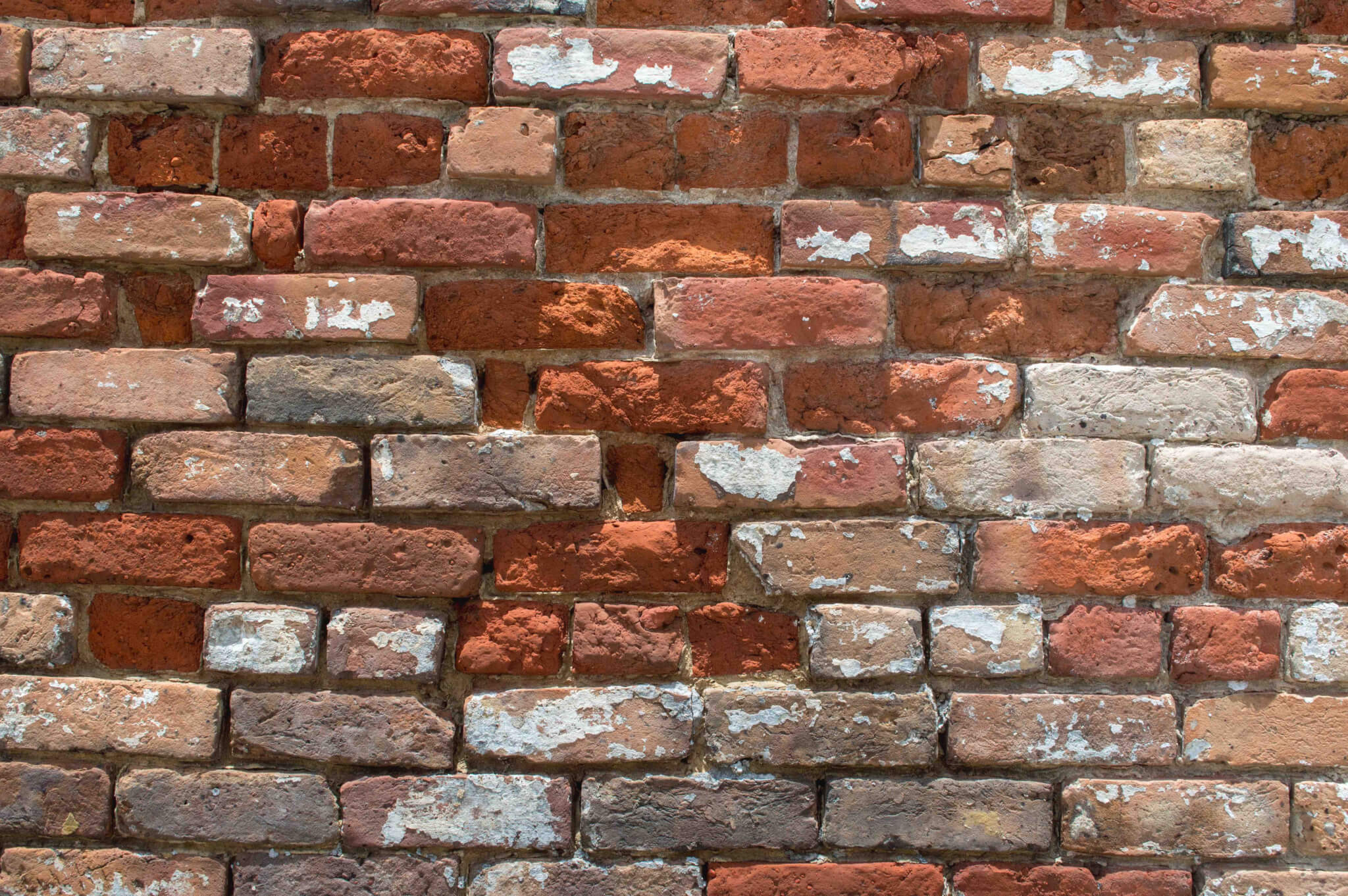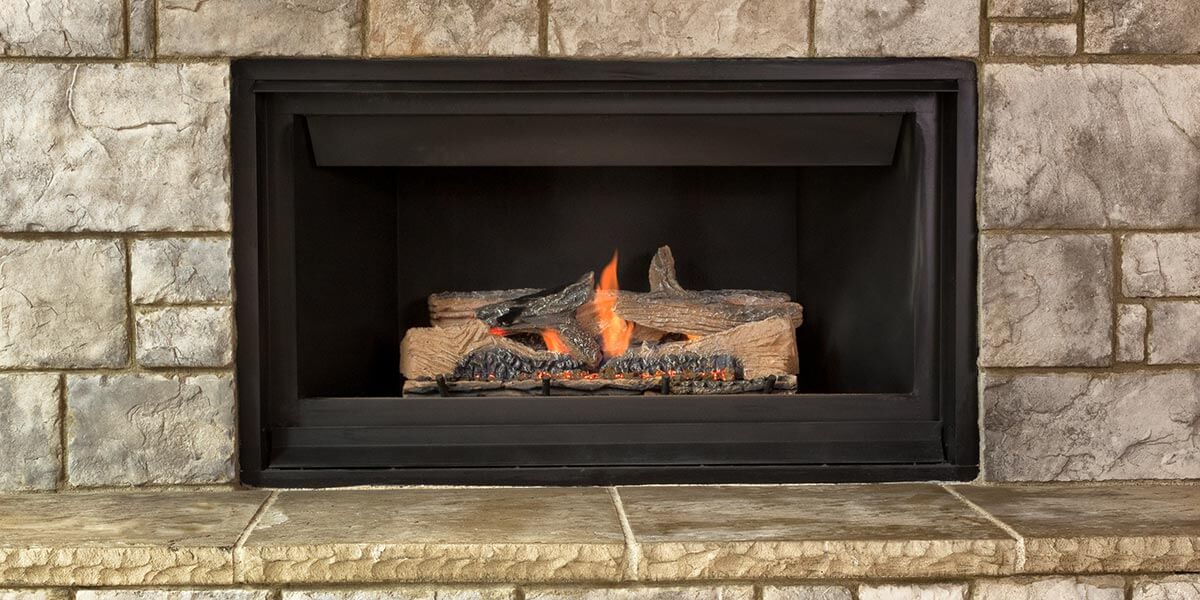How to Maintain Your Chimney in Winter: Part 2
As we discussed in How to Maintain Your Chimney in Winter: Part 1, Chimney maintenance is extra important in these colder months. Extra steps have to be taken to ensure that masonry work doesn’t set too slow, leaving you with a leaning chimney because the mortar took longer than usual to dry. In this post, we will continue to outline important components of the chimney and its masonry that need to be considered when it comes to ensuring the functionality and the longevity of your chimney.
Address Deteriorated Mortar Joints
This doesn’t need to be too in-depth. The mortar joints are the grayish (generally speaking) mortar that you see between the bricks of your chimney (or home). Just like the concrete crown, as the effects of weathering take a toll on the masonry, the mortar joints can begin to deteriorate. These are generally pretty visible to the naked-eye. Missing mortar between bricks? You are, indeed, experiencing deteriorated mortar joints. Mortar joints are designed and are constructed to keep water out, but once deterioration begins — the porous masonry (brick) will absorb water and the joints will continue to crumble. The best type of chimney maintenance for rectifying this problem is to have the joints ground out and repointed (filled back in with mortar). Simply putting more mortar back in is not going to be the most ideal fix as the deterioration will simply continue rather than be brought back to a fully restored state.
Address Flashing
Flashing is (generally) the sheet metal material that is utilized for the sealing of the chimney to the roof (or vice versa). Flashing is put beneath the shingles of the roof and is caulked to the masonry of the full-masonry chimneys. Flashing is intended to dispel the water from running all of the way down the chimney into the home, ruining drywall and other structural materials inside of the home. You may notice a flashing issue if you see water-spots on the ceiling surrounding the chimney – this problem does not resolve itself, you’ll continue to experience damage to the interior structural components of your home until this is addressed and repaired. The flashing allows the chimney and the roof to come together while still expanding and contracting, creating the need for less chimney maintenance in the long run if addressed properly.
Consider a Cricket
A cricket is a structure that is installed at the point where the roof and the back of the chimney come together. Stick with us here: if a chimney is erected perpendicular to the home’s roof, there will be a place in which the roof and the chimney meet – often a rather abrupt spot where water has an opportunity to sit and wait around, freeze and really take a toll on your chimney’s masonry. The cricket is a triangular shaped structure that cause the water to run out and away from the back of the chimney.
Winter is a rough season for your masonry and the Indianapolis area is no exception to this rule. Take a look at the masonry on or around your chimney and if you see any reason to believe it’s not in great condition, give us a call reliable, professional chimney maintenance: 317-500-1250. Brick + Ember Outfitters is committed to building equity, restoring beauty and growing peace of mind for our Indianapolis homeowners.
Related Articles:
- How to maintain your chimney in winter: Part 1
- 5 Issues Commonly Identified During a Chimney Sweep and Inspection
- When Is the Best Time to Hire a Chimney Sweep in Indianapolis?
- 5 Tips to Help Keep Your Fireplace and Chimney in Good Condition
- 5 Reasons to Call a Chimney Sweep for Your Indianapolis Home
- When Is Chimney Removal Necessary?
How to Maintain Your Chimney in Winter: Part 1
Winter is (still) here, and we can’t stress enough that chimney problems will perpetuate themselves, not fix themselves. Chimney maintenance is extra important in these colder months, especially if you have a beautiful, full-masonry chimney structure, as masonry construction is exponentially more demanding in the winter months than it is in the warmer months of the year. In this post, we will give you a few options for getting the chimney under control, even when the temps are much lower.
Addressing cracked or deteriorating crowns
Full-masonry chimneys are beautiful structures that accent the rest of your home. These classifications of chimneys are constructed with a concrete crown up top and are extremely susceptible to the effects of weathering — year after year. Freezing and thawing, rain, sleet, snow, ice and anything else you can think of, those crowns go through it all! Which means they can begin to deteriorate, due to weathering.
Given that a concrete crown serves as the top, or “roof”, of the chimney’s masonry work below — if hairline cracks form, water will find itself in. A couple of rough winters and those hairline cracks turn into the real deal cracks. Chipping and cracking of the concrete crown means more water for the masonry below and we all know how that story goes — whomp. You’ll either notice a concrete crown issue because your bricks are chipping and spalling, or you may begin to experience a legitimate leak from the chimney.
Neither is a winning situation, but both could be avoided with regular chimney maintenance.
Chimney Maintenance Tips
- Confirm with your chimney repair company that there is an overhang for the concrete crown. Water needs to be directed away from the chimney below, not directed to run down the chimney below. It will do yourself and your chimney no good to just slap a new crown on that reaches the edges of the chimney. It needs to extend past the edges of the chimney. If you have a chimney with a steel chase-cover, click HERE to learn more about ensuring your chase-cover is protecting your chimney.
- Have your concrete crown assessed for any and all possibilities of unwanted hairline, or legitimate cracks that could lead to further deterioration to your chimney’s masonry, or leaks. Brick + Ember Outfitters is interested in building equity, restoring beauty and growing peace of mind, so that means we’ve got options to suit the needs of you, as the homeowner.
Extra steps have to be taken to ensure that masonry work doesn’t set too slow, leaving you with a leaning chimney because the mortar took longer than usual to dry. Our professionals are equipped to help!
Ask Yourself...
Are you wanting to stick around in your current home for 6 months, 3 years or be there your whole life long? At Brick + Ember Outfitters, we will make sure you know what’s available, what’s best, and why! Give us a call and grow a little peace of mind as you light up your fireplace this winter: 317-500-1250.
Related Articles:
- How to maintain your chimney in winter: Part 2
- 5 Issues Commonly Identified During a Chimney Sweep and Inspection
- When Is the Best Time to Hire a Chimney Sweep in Indianapolis?
- 5 Tips to Help Keep Your Fireplace and Chimney in Good Condition
- 5 Reasons to Call a Chimney Sweep for Your Indianapolis Home
- When Is Chimney Removal Necessary?
Give Your Fireplace a Spring Facelift
After years of searing-hot blazes, fireplace mortar can crack, crumble, and fall out. Gaping mortar joints are not only unattractive, but they leave the bricks more vulnerable to damage. So as you continue to enjoy this wood-burning season, examine the condition of the mortar, chimney interior, and overall aesthetic of your fireplace. Fireplaces are one of the home features people really covet, and in this article, we will explain how your old masonry fireplace can provide your home with more heat than it normally does with a fireplace facelift.
Install a new chimney liner.
A fireplace facelift isn’t just about the aesthetics. A great way to increase the amount of heat within your home is to have a chimney liner installed. Not only do they protect the house from heat transfer to combustibles, but they also protect the masonry from the bi-products of combustion that can cause corrosion. Types of chimney liners include clay tiles, metal, and cast-in-place chimney liners.
Fix that brick!
This is an obvious fireplace facelift need. If you have brick that is chipped or missing mortar, cracks of gaps between panels, or obvious holes in the fire-box or smoke chamber, these are repairs that can achieve a significantly updated look.
Additionally, giving your hearth a more unique and modern touch can be achieved by using different patterns and placements of bricks. There are a variety of colors of bricks that can add to the existing decor of the room.
Have you considered tile?
According to The Tile Home Guide, a fresh fireplace tile upgrade is one of the smartest and most economical home improvements you can choose even when on a budget due to the fact that the total area to be tiled is usually fairly small and will only need a minimal amount of tiles, time, money, and effort to complete.
Fireplace tile is not just used for its looks, as it also functions as a non-flammable barrier between the opening of your fireplace and the rest of your home.
The majority of tile materials can handle the extremely high temperatures that fireplaces reach and the extreme changes in temperature that take place very quickly without damage. In addition to the functionality being strong, but the wide variety of tile styles, colors and themes is always growing. There are so many unique options to make your fireplace facelift stand out!
Get yourself a mantel!
A mantel is the signature piece for any fireplace and can truly complete a fireplace facelift in the best kind of way. Adding a custom mantel changes the entire look and feel of a room, and with so many styles to choose from, you are sure to find something you love that fits your vision.
The simplest style can help the fireplace blend in, while something more complex and unique will make your fireplace stand out and become the focal point of a room.
Appearance matters. In a survey from the National Association of Home Builders, more buyers cited looks (46%) than quality (31%) as an important fireplace trait. As the focal point of a room, don’t you want to gaze on it lovingly?
It is common for homeowners to use the opportunity of replacing a fireplace or having the flue relined as a chance to give their fireplace area a facelift, and here at Brick + Ember Outfitters we are certified and experienced in this remodeling job.
We would love the opportunity to give you that fireplace facelift you’ve been considering and envisioning. Give us a call to discuss: 317-500-1250 or visit www.cmoutfitters.com.
Related Articles:
- Understanding Your Fireplace Damper
- How to Safely Remove Wood Ashes From Your Fireplace
- How to Weatherproof a Fireplace
- Proper Gas Fireplace Maintenance
- What are Common Gas Fireplace Problems?
How to safely start a fireplace fire
It’s winter, and it’s cold, and there is nothing quite like a cozy fireplace-fire to enjoy with your friends, family and roommates. But lighting a fire in the fireplace is not something you want to regret, so we have outlined the safe way to go about starting a fire in your fireplace to bring the most comfort in your home.
WHAT IS THE BEST TYPE OF WOOD TO BURN IN YOUR FIREPLACE?
When it’s cold outside, there is nothing quite like the cozy feeling of warming yourself up by the fire. Having a fireplace in your living space gives you the opportunity to bring the outdoors in and to warm up a small area quickly. Many of us have a pile of firewood next to the exterior of our homes from a recent tree-trimming project, but have you ever thought about what kind of wood is best to burn in a fireplace? In this post we will help explain which type of fireplace wood is best to burn, and why.
What Is a Chimney Fire?
Your chimney and the flue that lines it adds architectural interest to your home, but its real function is to carry dangerous flue gases from your fireplace, wood stove or furnace safely out of your home. As you relax in front of your fireplace, the last thing you are likely to be thinking about is the condition of your chimney. However, if you don’t give some thought to it before you light those winter fires, your enjoyment could be very short-lived.
What are Common Gas Fireplace Problems?
A gas fireplace provides the most convenient way to enjoy the flickering flames of a fire. No need to chop or haul firewood; simply flip a switch or light a match to get the appliance started. Their aesthetic and convenience are hard to beat, and it’s no surprise that even older vintage homes are upgrading to gas-fueled alternatives. But as with any appliance, there are various problems you may encounter. In this article we outline some of the most common types of problems that homeowners have with gas fireplaces to be aware of.
When is masonry repair required?
Structures designed with masonry are made for performance and durability, not to mention the aesthetic component. However, even the most soundly designed and constructed masonry buildings eventually require periodic maintenance. Over time, environmental factors, weather, chlorides, and pollution all contribute to the need for repairs. In this article, we will help explain how to recognize the symptoms of damage that is in need of masonry repair and how to take action.
Proper Gas Fireplace Maintenance
Wood is good, but you can't beat the ease of a fire that lights with the push of a button. However, it’s important to pay attention to things such as gas log maintenance and gas fireplace maintenance. Both are extremely important in ensuring your fireplace continues to work as it should. Here we outline some proper gas fireplace maintenance tips to make sure your fireplace continues to work as effectively as possible.
Gas Fireplace Maintenance Guidelines
1. Safety Check
A gas fireplace safety inspection makes sure that your fireplace is working properly and safely within the walls of your home. A technician certified by the Chimney Safety Institute of America will inspect to make sure there are no leaks in the system, as well as inspect the burner and gas pressure.
2. Cleaning Glass
Another crucial step in your gas fireplace maintenance is cleaning the glass. Where a gas fireplace does burn cleaner than a wood burning fireplace, however just like a wood burning fireplace, you should still clean a gas fireplace every year following there steps:
- First, make sure the fireplace is cool and turned off. It’s also a good idea to make sure the gas valve is turned off.
- Clean the glass by removing it from the fireplace (if possible) and setting it down on an old sheet or drop cloth to keep the floors from getting dirty when you clean.
- If the glass is pretty clean, you can most likely use a glass cleaner. But if you see a few of those black spots, try to use something like a nylon scrubber, that won’t scratch the glass, and Dawn dishwashing liquid to carefully remove the spots
- If the glass is dirty with a black coating or a white haze, you’ll need to do a heavy duty cleaning using Dawn dishwashing liquid and a soft rag.
3. Cleaning Gas Logs
Gas fireplace maintenance isn’t complete without getting into all of the crevices of those logs. You can easily clean and dust cobwebs from the logs by using a vacuum or a shop vac with the brush attachment to clean the logs and the surrounding area. If dust is coated and stuff in corners of the logs, you can use a small soft paintbrush first to help dislodge before vacuuming.
- If you notice the logs look worn down or if they are cracked or broken, they should be replaced so the fireplace continues to function as it should.
- If it looks like there is an excessive amount of black carbon buildup on the logs, it could be an indication of a problem and you should call to have your fireplace serviced.
The overall goal of gas fireplace maintenance is to clear out the accumulation of sediment in the pilot opening. A can of compressed air, like the ones used for keyboard cleaning will do the trick, may be used with the included straw to direct air toward the opening to clean it out. If you opt to do this yourself, remember to make sure the pilot is OFF before beginning. If the pilot assembly is at least five years old or if you live close to salt water (not an issue for us Indiana folk), this method likely won’t be as effective as it once was, leaving you needing to seek professional assistance!
Due to the nature of gas being dangerous, if you are in need of any sort of repair, we don’t recommend you take care of that for your gas fireplace on your own. Please call the certified professionals at Brick + Ember Outfitters if you need help: 317-500-1250.
It’s Time for a New Year’s Chimney Sweep
The start of the New Year isn’t just a great opportunity to make resolutions – it’s also the perfect time to have your chimney swept!
Throughout the year our chimneys can suffer from a buildup of soot, ash, and creosote. Having your chimney swept by a certified professional is the best way to keep your chimney system clean and working safely and efficiently all year long, and below we have outlined why starting your new year off with a chimney sweep is a great idea.
Keep up with Home Maintenance
Many homeowners feel lost under a mountain of their home maintenance to do list, so if you’re looking to up your home-maintenance game, schedule a chimney sweeping and inspection!
All chimneys and fireplaces should be cleaned and inspected at least once per year to keep your home safe from the risk of a chimney fire, and to lower the risk of carbon monoxide poisoning in the home. However, this is one home-maintenance task you should leave to the professionals.
Keep Your Home Cleaner
A cleaner chimney and fireplace also means a cleaner home. If you have a wood-burning fireplace, a dirty chimney can cause smoke to back up into your home, leaving dust and small particles all over your furniture. A dirty chimney also can lead to unpleasant odors that can flow backward into your home, leaving your home smelling foul no matter how well you clean it. Scheduling a new year’s chimney cleaning can help to freshen your home and rid it of embarrassing odors in the new year.
Lower Your Carbon Footprint
Are you looking to lower your impact on the environment in the new year? Keeping your chimney and fireplace, and putting them to use, can help. A chimney sweeping and inspection helps to keep your fireplace running more efficiently, lowering your energy bills and lessening your carbon output.
And when you use your fireplace more frequently, whether you’re burning clean natural gas or carbon-neutral wood or wood pellets, you’re doing your part to heat your home in a cleaner, more natural way.
Save (more) Money
Year after year, saving money tops the list of most popular new year’s resolutions. Having your fireplace and chimney swept and inspected can help! First and foremost, a clean chimney and fireplace help the entire system run more efficiently.
As an added bonus, when you use your fireplace more frequently, you can lower the thermostat for the rest of your home and concentrate your heating dollars on the rooms you spend the most time in, which can lower you home-heating bills dramatically.
If a cleaner home with a smaller footprint that saves you money is your idea of a good new year’s resolution (I mean...why wouldn’t it be??), give your local Brick + Ember Outfitters a call today. We’ll help you kick off your 2019 with one less item on your home maintenance list!

